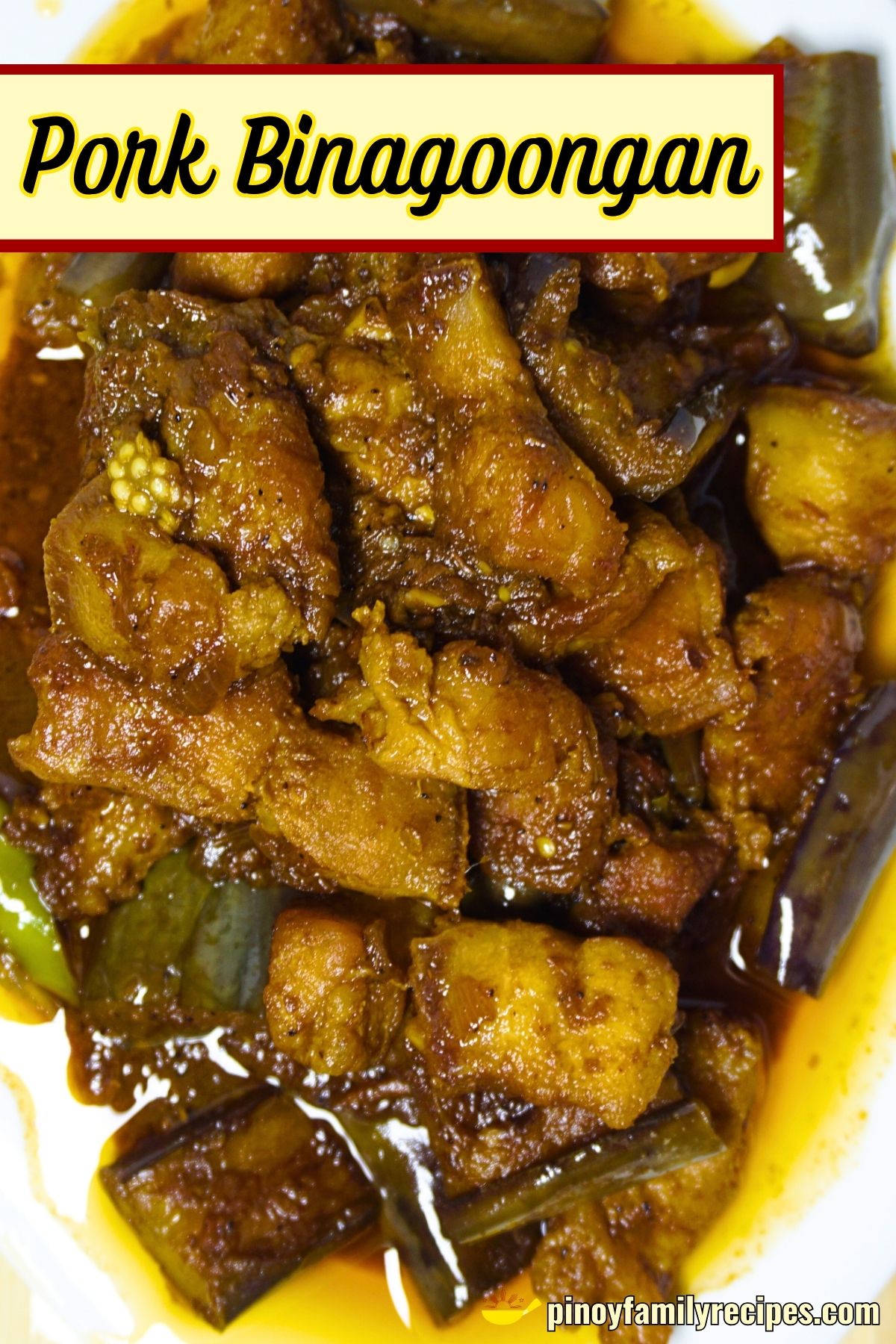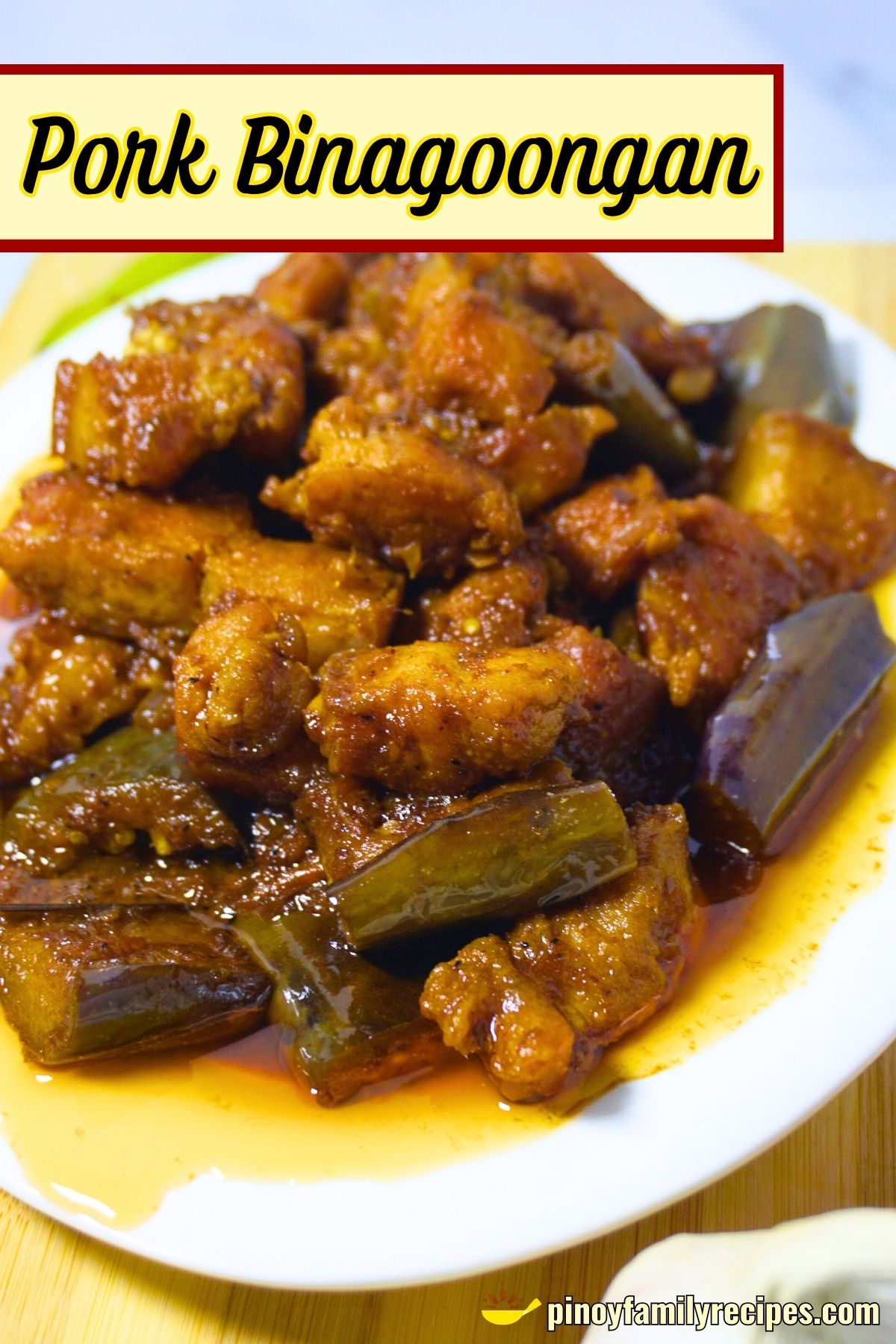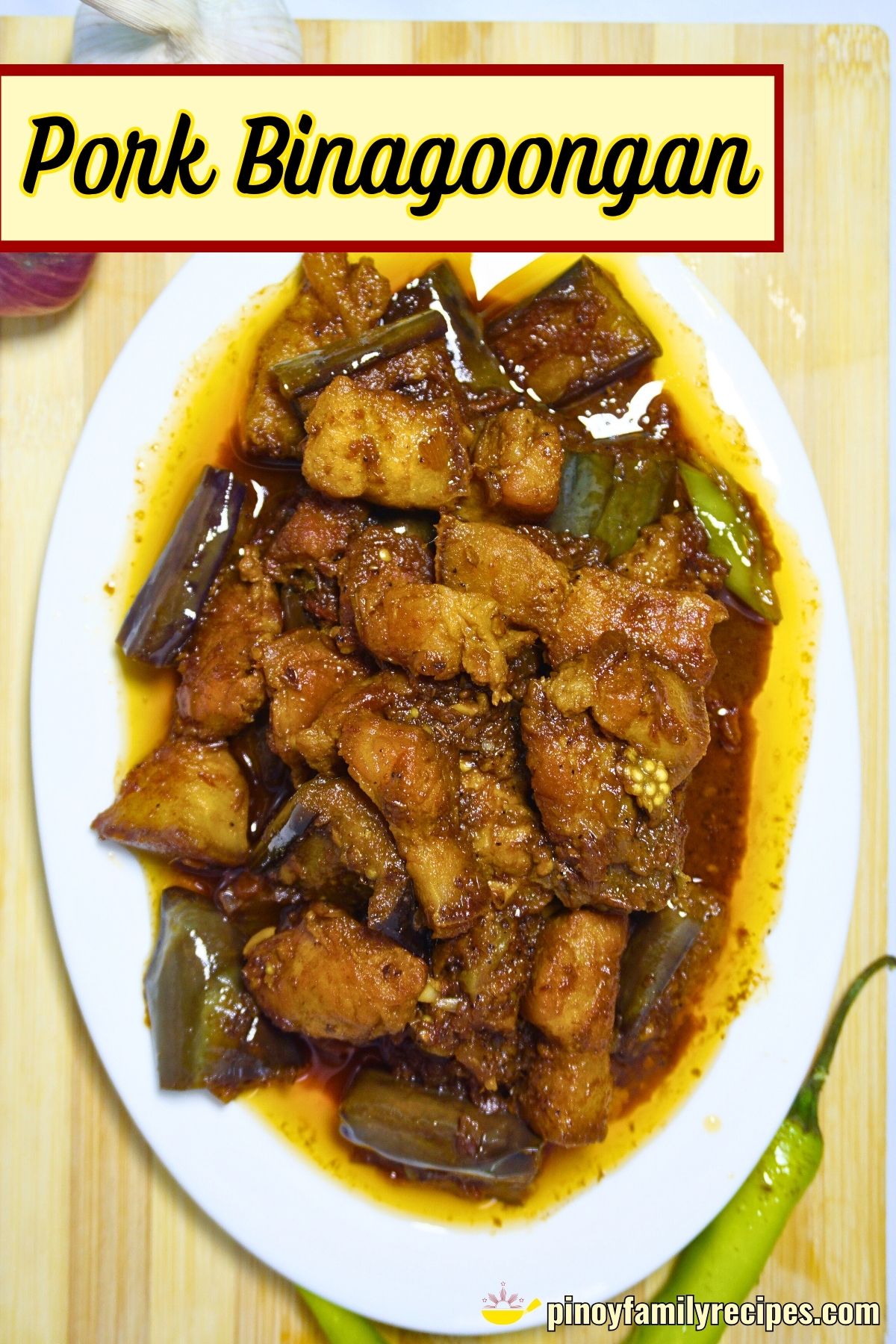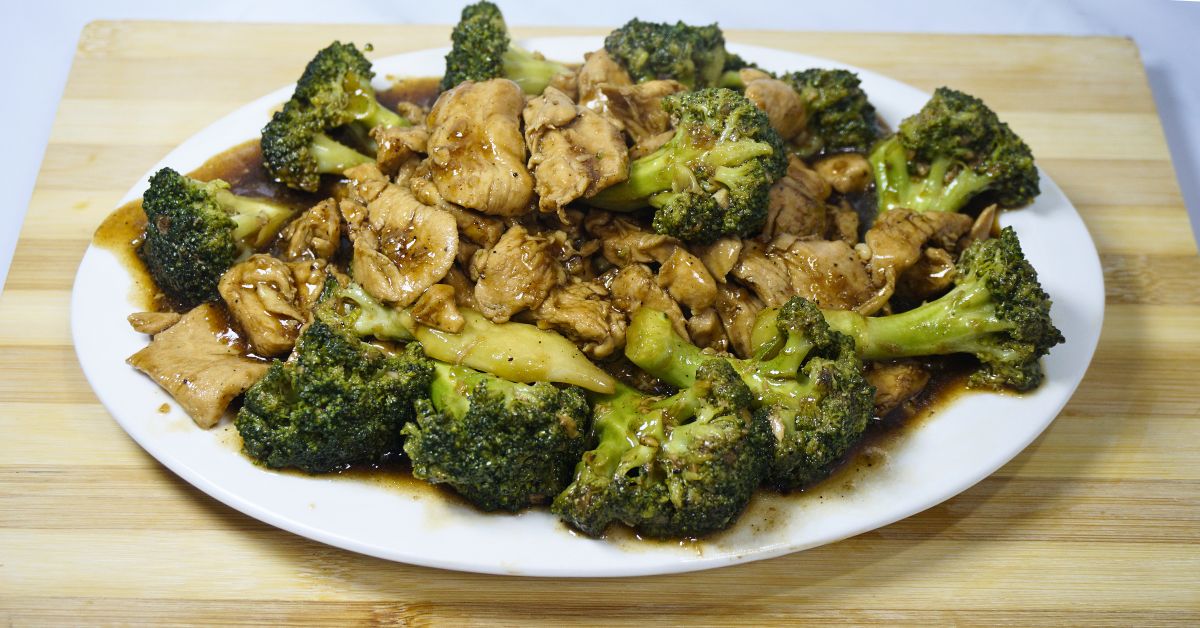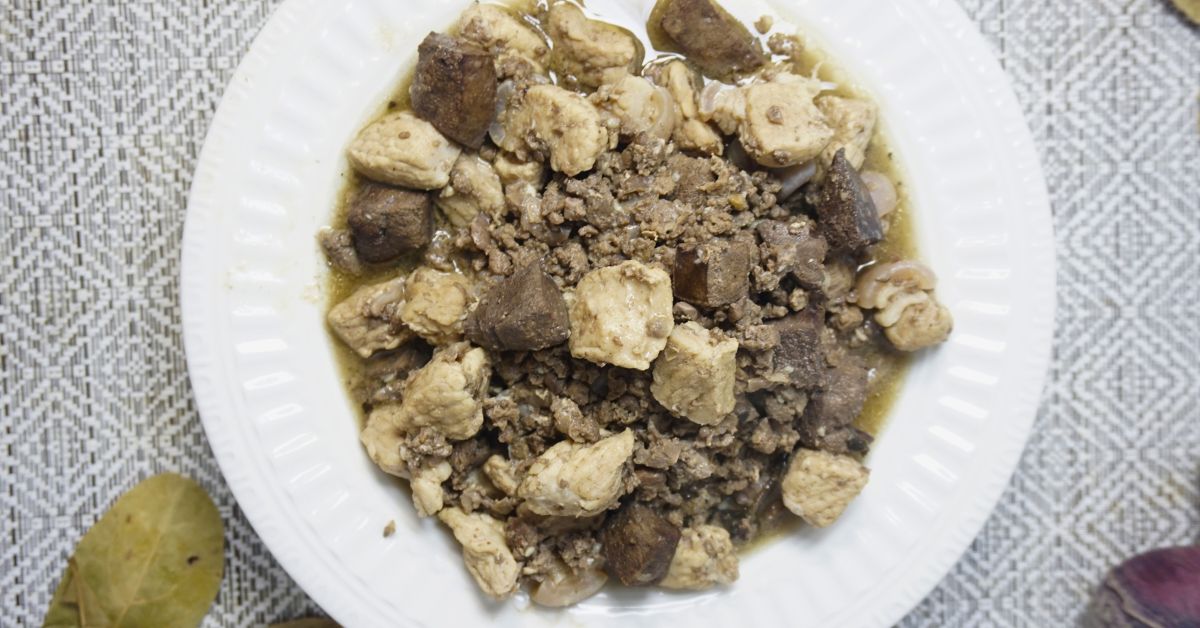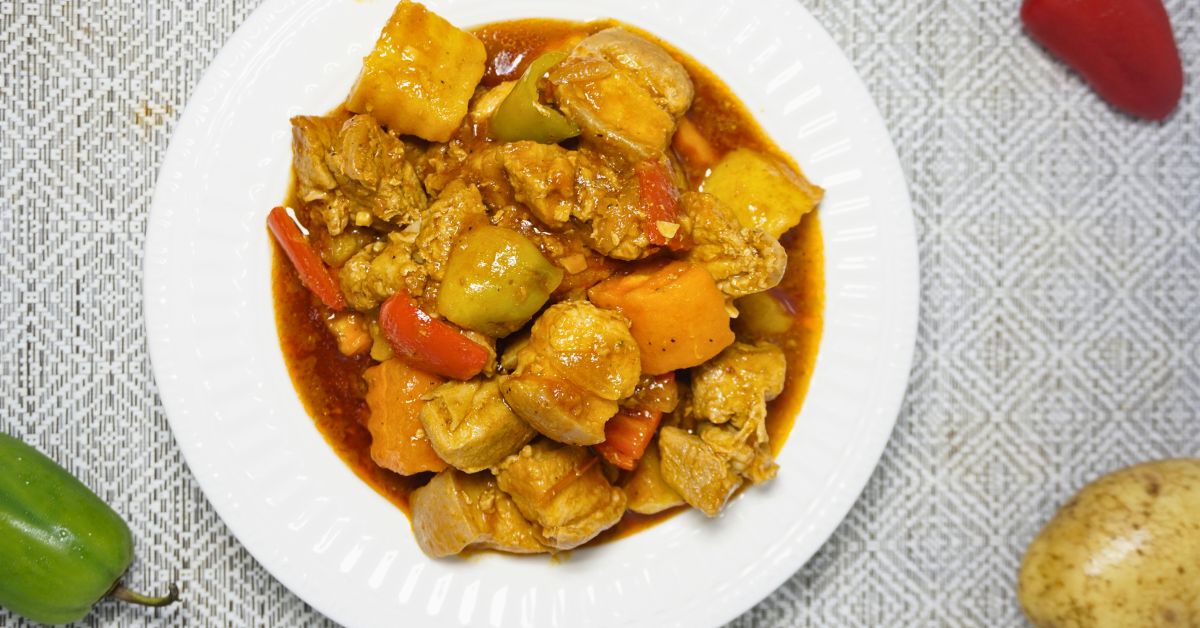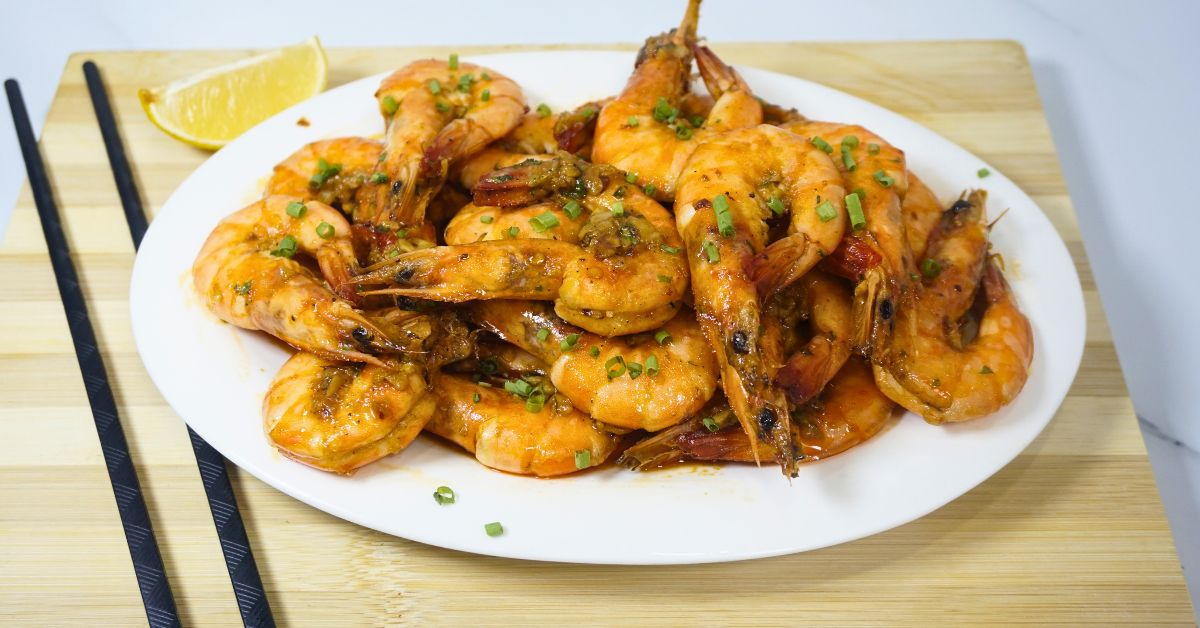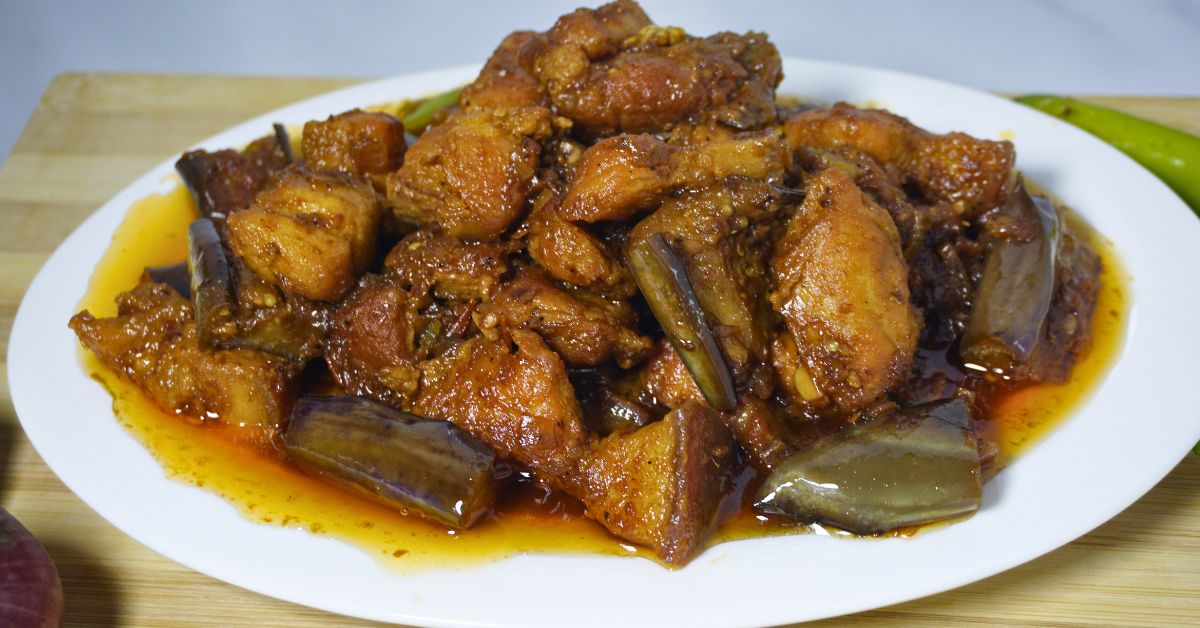
When it comes to comfort food with bold, rich flavors, Pork Binagoongan is always at the top of my list. The combination of tender pork belly and savory bagoong (shrimp paste) gives it that unique Filipino twist that’s truly one-of-a-kind. I remember growing up, my lola (grandmother) would always cook this dish during family gatherings, and the smell of shrimp paste sautéing in the kitchen would fill the entire house. That’s when you knew something special was being cooked.
After making it countless times for my own family, I’ve developed a version of Pork Binagoongan that’s simple but delivers big on flavor. Let me share with you my step-by-step process, using basic ingredients you can find in any Filipino pantry. Trust me, this dish is a hit with everyone in the family, especially when paired with a steaming plate of white rice.
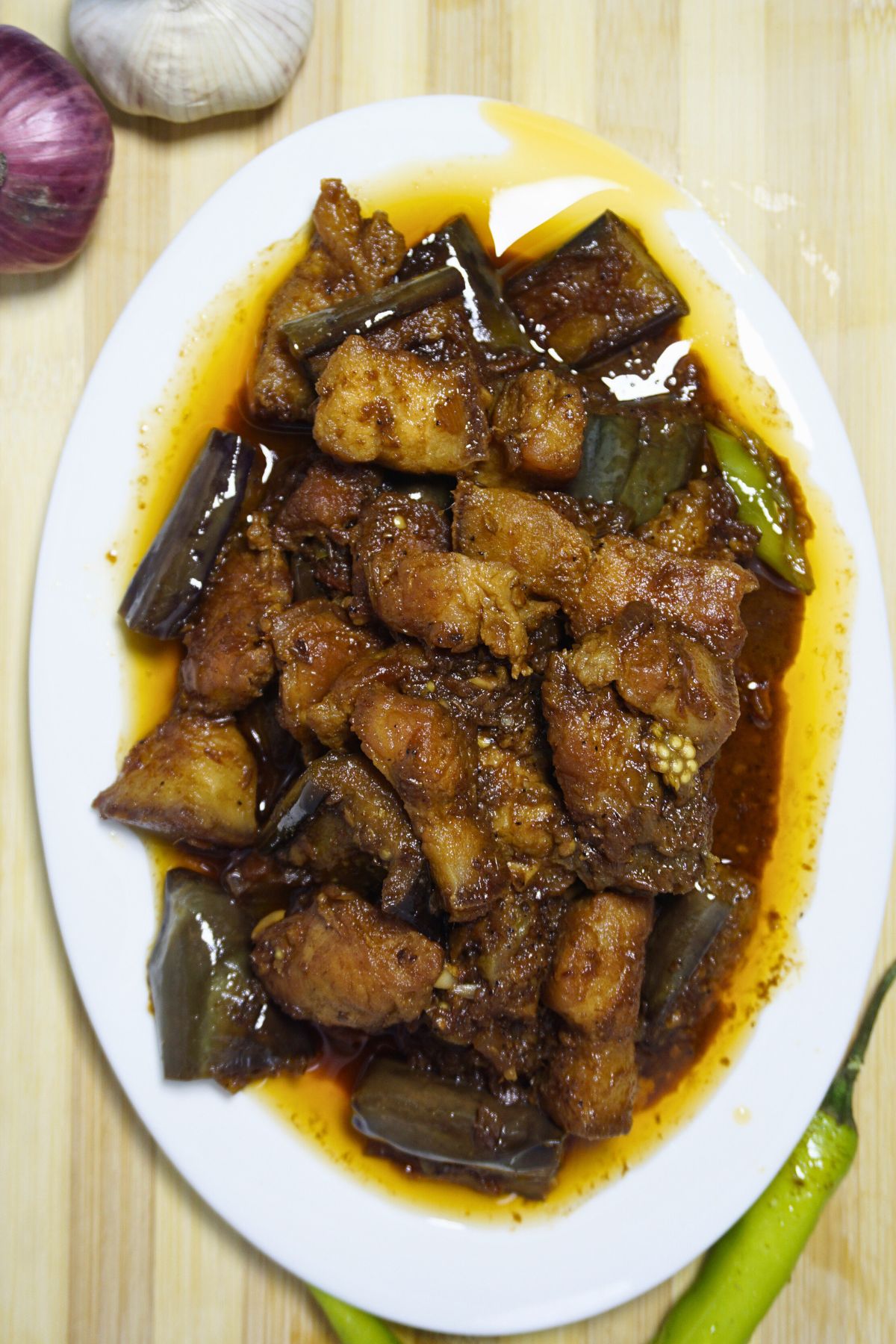
Why Pork Binagoongan?
Pork Binagoongan is the perfect balance of savory, salty, and slightly sweet, with that distinct umami from the bagoong alamang (sauteed shrimp paste). The pork belly brings richness and tenderness, while the eggplant adds a creamy texture that absorbs all the wonderful flavors from the bagoong. For me, it’s the type of dish that makes you want to reach for a second serving of rice, especially with the juicy pork and eggplant bathed in that delicious sauce.
The first time I made it, I was intimidated by the strong flavor of shrimp paste. But once you learn how to balance it with the right amount of sugar, vinegar, and tomatoes, it all comes together beautifully. Now, it’s one of those dishes I keep coming back to because it’s hearty and perfect for family meals. Plus, it’s easy to prepare once you get the hang of it!
Pork Binagoongan vs Bicol Express - What’s the Difference?
I love cooking these two dishes and you don’t have to be confused between the two!
1. Main Ingredients
- Pork Binagoongan: The primary ingredient that sets Pork Binagoongan apart is the bagoong alamang (sauteed shrimp paste). It’s the dominant flavor, giving the dish its salty, umami-rich taste. Eggplant is also commonly added.
- Bicol Express: This dish is known for its combination of coconut milk and siling labuyo (bird’s eye chili), making it creamy and spicy. It also uses bagoong alamang, but the coconut milk and chilies make it distinctively richer and spicier.
2. Flavor
- Pork Binagoongan: The flavor is predominantly salty and savory due to the shrimp paste, balanced with a little sweetness and tang from sugar and vinegar.
- Bicol Express: Bicol Express is creamy and spicy, with a well-balanced mix of salty (from the shrimp paste), rich (from the coconut milk), and spicy (from the chilies).
3. Heat Level
- Pork Binagoongan: It is typically mild, though some versions add a bit of green chili for slight heat, but it’s not traditionally spicy.
- Bicol Express: Spiciness is a defining feature of Bicol Express, thanks to the chilies, making it much hotter than Pork Binagoongan.
4. Regional Origin
- Pork Binagoongan: It’s a popular dish throughout the Philippines, but doesn’t have a specific regional identity.
- Bicol Express: This dish comes from the Bicol region, known for its love of spicy food and use of coconut milk in many dishes.
5. Texture
- Pork Binagoongan: The dish has a dry, saucy consistency with chunks of pork and eggplant coated in shrimp paste.
- Bicol Express: The coconut milk creates a creamy sauce that thickly coats the pork, with a richer and smoother texture.
You can check my very own Bicol express recipe too!
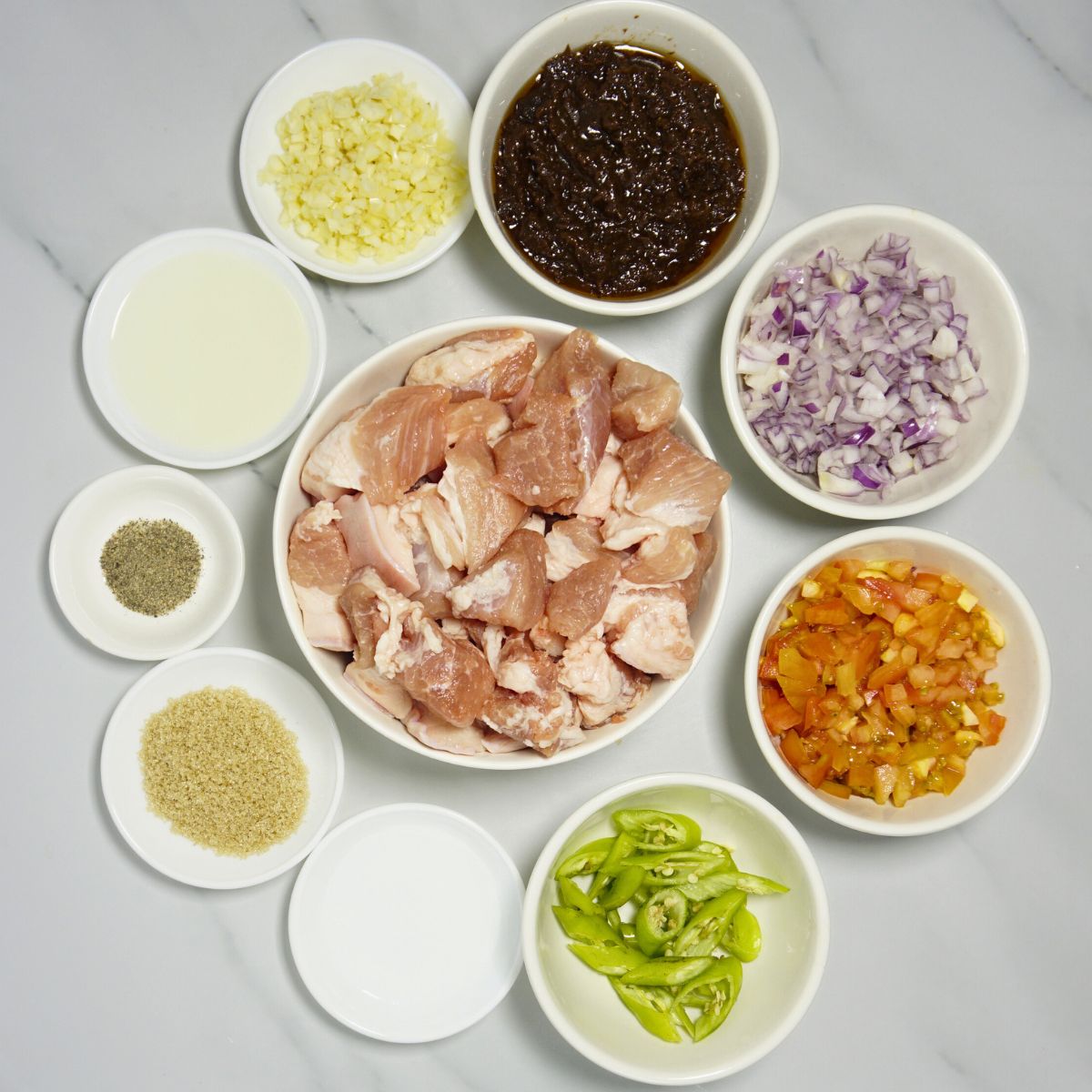
Pork Binagoongan Ingredients
Pork Belly: The star of the dish, pork belly adds a rich, tender texture with a balance of fat and meat. When browned, it releases flavorful fat that enhances the entire dish.
Garlic, Onion, and Tomatoes: This trio creates a flavorful base, with garlic providing a fragrant punch, onions adding sweetness, and tomatoes contributing a natural tangy sweetness that balances the strong bagoong flavor.
Bagoong Alamang (Sauteed Shrimp Paste): The salty, savory bagoong alamang gives the dish its signature umami kick. It’s rich, strong, and packs intense flavor in every bite.
Vinegar and Sugar: These balance the dish by adding a touch of sweetness from the sugar and a slight tang from the vinegar, cutting through the saltiness of the shrimp paste.
Ground Black Pepper and Long Green Chili (optional): Ground black pepper adds subtle warmth, while the long green chili gives an optional spicy kick for those who love heat.
Eggplant: Fried until golden, eggplant absorbs the rich sauce, providing a soft texture and mild flavor that complements the boldness of the pork and bagoong.
Salt: Adjusted to taste, salt enhances the natural flavors and ensures the balance of all ingredients in the dish.
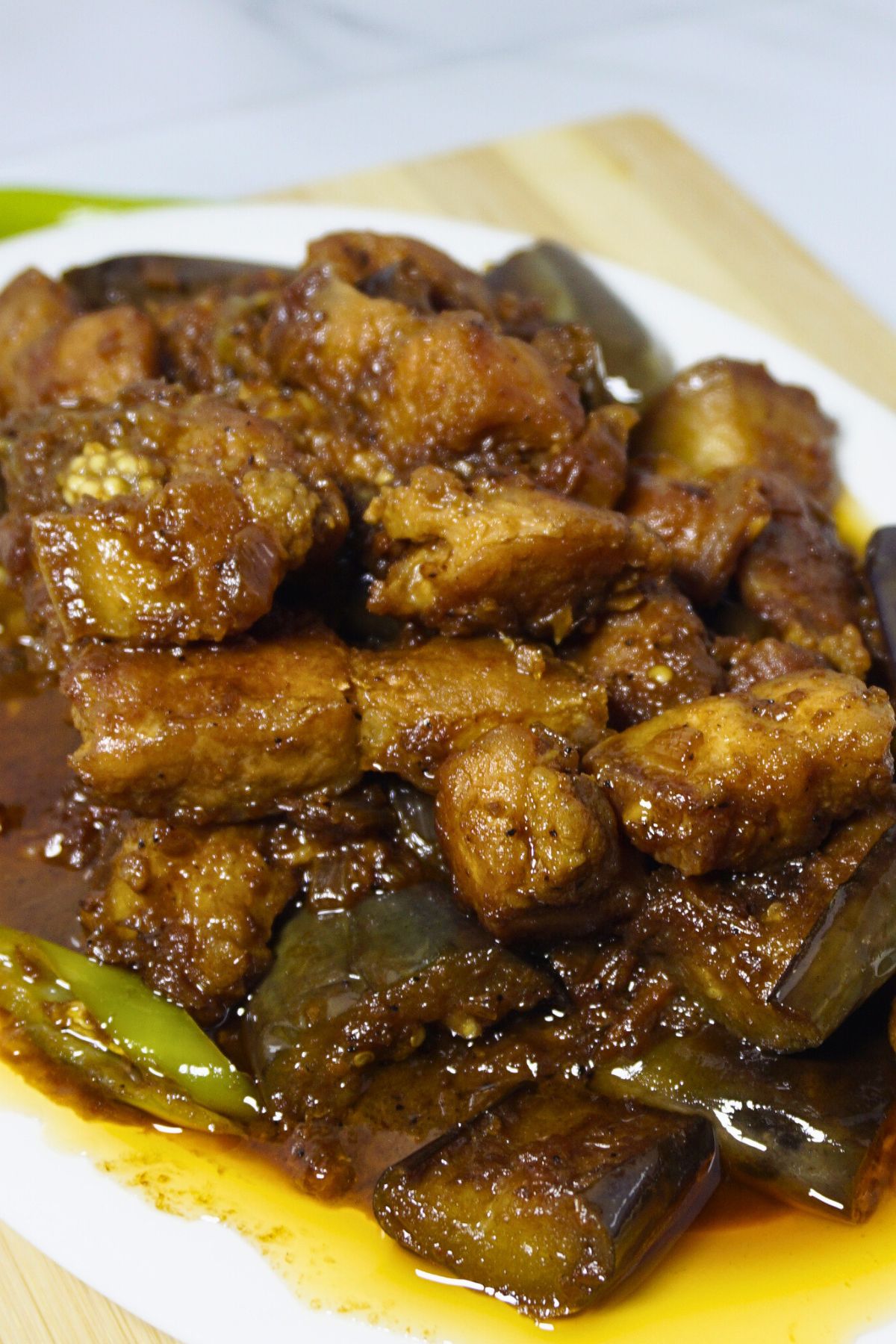
How to Cook Pork Binagoongan - Step by Step
Brown the Pork Belly
First, heat your pan over medium heat, and add the cubed pork belly. Let it cook until it turns brown and the fat starts to render. This usually takes about 5-8 minutes. You’ll want to stir the pork occasionally, making sure all sides get nicely browned. Once done, set the pork aside. Don’t throw away the excess oil—it will help flavor the rest of the dish.
Fry the Eggplant
Now, using the same pan and oil, fry the eggplants. Let them cook until they turn golden brown on all sides. This step ensures the eggplant has a nice texture before adding it back to the dish later. Once fried, set the eggplants aside, too.
Sauté the Garlic, Onions, and Tomatoes
In the same pan, add the minced garlic and sauté until it becomes fragrant. I love this part—the smell of garlic cooking always makes the kitchen feel warm and inviting. After about a minute, toss in the diced onions and cook until they become soft and translucent. Then, add your diced tomatoes and let them cook down until they release their juices and soften. This takes around 3-4 minutes.
Add the Bagoong
Next, it’s time to add the bagoong (shrimp paste). Stir it into the mixture of garlic, onions, and tomatoes. Let it cook for about 3-4 minutes to blend all the flavors together. This is where the magic happens—the bagoong gives the dish that signature salty, savory flavor that you’ll soon crave.
Balance the Flavors
Now, to balance the saltiness of the bagoong, add some sugar and ground black pepper. Then, pour in the vinegar. Let the mixture simmer for about 2 minutes without stirring to allow the vinegar to cook off. You’ll notice the vinegar adds a slight tang, which helps cut through the richness of the pork and shrimp paste.
Cook the Pork
Now, return the browned pork belly to the pan, stirring it into the flavorful bagoong mixture. Let the pork simmer, covered, on low heat for about 25-30 minutes, or until it’s tender. Stir occasionally to make sure everything is cooking evenly. If the mixture looks like it’s drying up, you can add a little more liquid as needed to keep it saucy.
Add the Eggplant and Chili
Once the pork is nice and tender, add the fried eggplant back into the pan. If you like some heat, you can also throw in one or two long green chilies at this point. Let everything cook together for another 5-7 minutes, giving the eggplant a chance to soak up the flavorful sauce.
Taste and Adjust
Before serving, taste the sauce to make sure the balance of flavors is just right. You can add a little more salt or sugar if needed to get the taste you like. Once you’re happy with it, let the dish cook for another minute or two to bring everything together.
Serve and Enjoy!
Your Pork Binagoongan is ready! Transfer it to a serving dish and serve it with hot, steaming rice. The sauce is incredibly flavorful, and you’ll want to make sure every spoonful has a little bit of pork, eggplant, and bagoong. Enjoy!
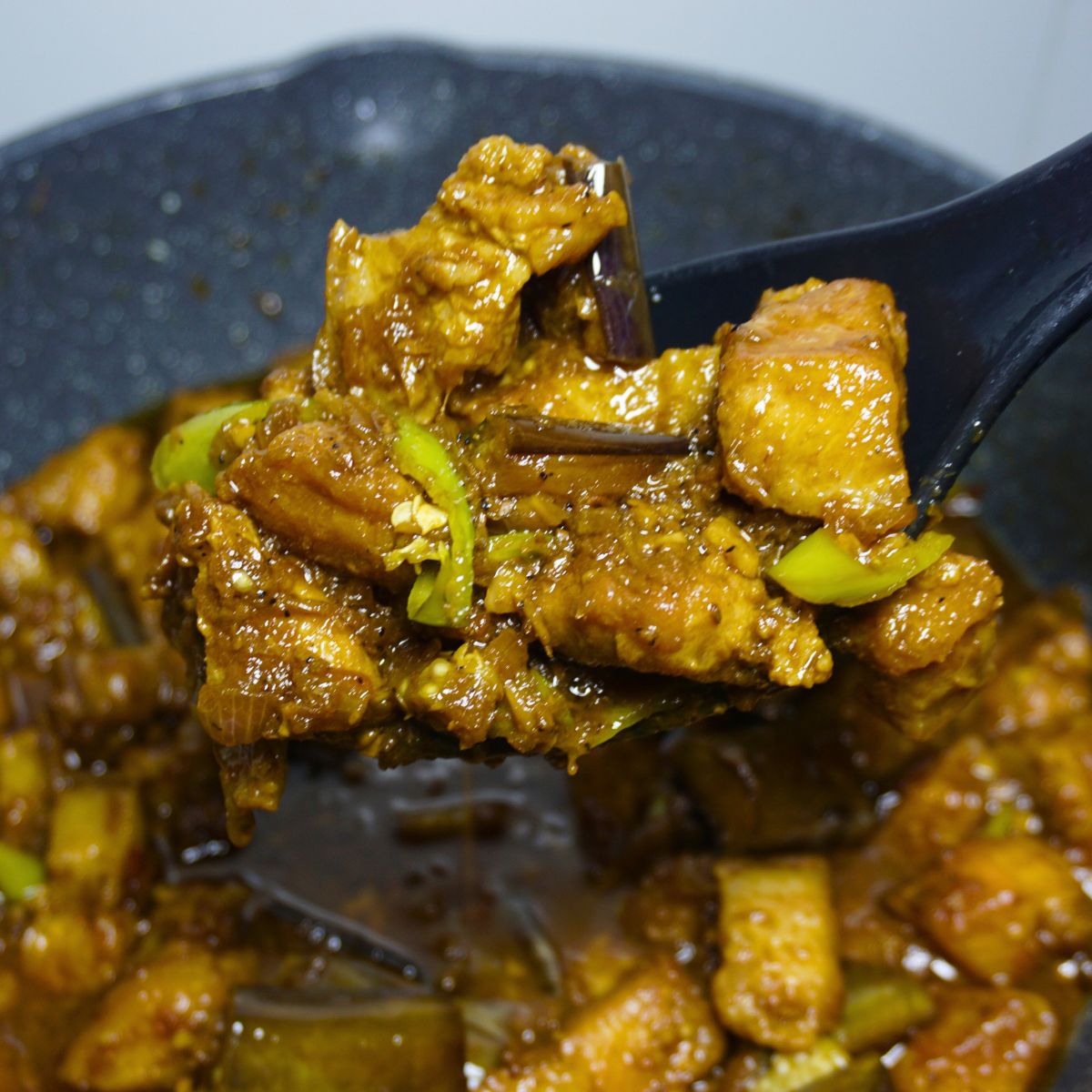
Tips for Cooking Pork Binagoongan
Here are a few tips I’ve learned from experience to make sure your Pork Binagoongan turns out perfect every time:
- Use pork belly for the best flavor and texture. The fat from the pork belly gives the dish richness and makes the sauce even more delicious.
- Balance is key. Bagoong is very salty, so make sure to adjust the sugar and vinegar to create that perfect sweet and tangy balance.
- Fry the eggplants separately. This gives them a nice golden-brown color and allows them to soak up the sauce without becoming mushy.
- Simmer the pork low and slow. This ensures the pork is tender and flavorful. If you rush this step, the pork might turn out tough.
Frequently Asked Questions
For this dish, I recommend using sauteed shrimp paste (bagoong alamang). It’s already cooked and has a milder, more balanced flavor than raw shrimp paste.
While pork belly is ideal for its fat content, you can also use pork shoulder or pork butt. Just keep in mind that leaner cuts might not be as tender or flavorful.
Yes! Frying the eggplants gives them a better texture and allows them to absorb the sauce without becoming too soft or mushy.
Let the pork simmer in the sauce for at least 25-30 minutes, or until it’s tender. The longer it simmers, the more flavorful the pork will be.

Pork Binagoongan
Ingredients
- 2 tbsp Cooking Oil
- 800 grams Pork Belly (cut into cubes)
- 8 cloves Garlic (minced)
- 1 piece Onion (diced)
- 3 pcs Tomatoes (diced)
- 200 grams Bagoong Alamang (sauteed shrimp paste)
- 1 tbsp Vinegar
- 1 tbsp Sugar (adjust to taste)
- 1/2 tsp Ground Black Pepper
- 1-2 pcs Long Green Chili (optional)
- 4 pcs Eggplant (cut into 2 inch)
- 1 cup Water
- Salt (to taste)
Instructions
- In a pan, heat 2 tbsp of cooking oil over medium heat. Add the cubed pork belly and cook until browned and the fat starts to render. This usually takes about 5-8 minutes. Remove and set aside.
- Do not remove the excess oil, use this to fry the eggplants until it turns golden brown. Remove from the pan, set aside and cut into 2 inch pieces.
- On the same pan add the minced garlic and sauté until fragrant. Then, add the diced onions and cook until they turn soft and translucent.
- Toss in the diced tomatoes and cook until they soften and release their juices, about 3-4 minutes.
- Stir in 200 grams of bagoong alamang (sauteed shrimp paste) and cook for another 3-4 minutes to allow the flavors to blend well.
- Add 1 tablespoon of sugar (adjust to taste) along with 1/2 teaspoon of ground black pepper. Pour in 1 tablespoon of vinegar. Let it simmer for 2 minutes without stirring to allow the vinegar to cook off.
- Add 1 cup of water and bring the mixture to a simmer. Add the seared pork. Cover the pan, lower the heat, and cook for about 25-30 minutes, or until the pork becomes tender. Stir occasionally, adding more water if necessary.
- Once the pork is tender, add the fried eggplant and optional 1-2 pieces of long green chili. Let everything cook together for another 5-7 minutes to absorb the flavors.
- Check the taste and adjust with salt and sugar as needed. Let it cook for another minute or two.
- Transfer to a serving dish and enjoy your Pork Binagoongan with a steaming plate of rice!
